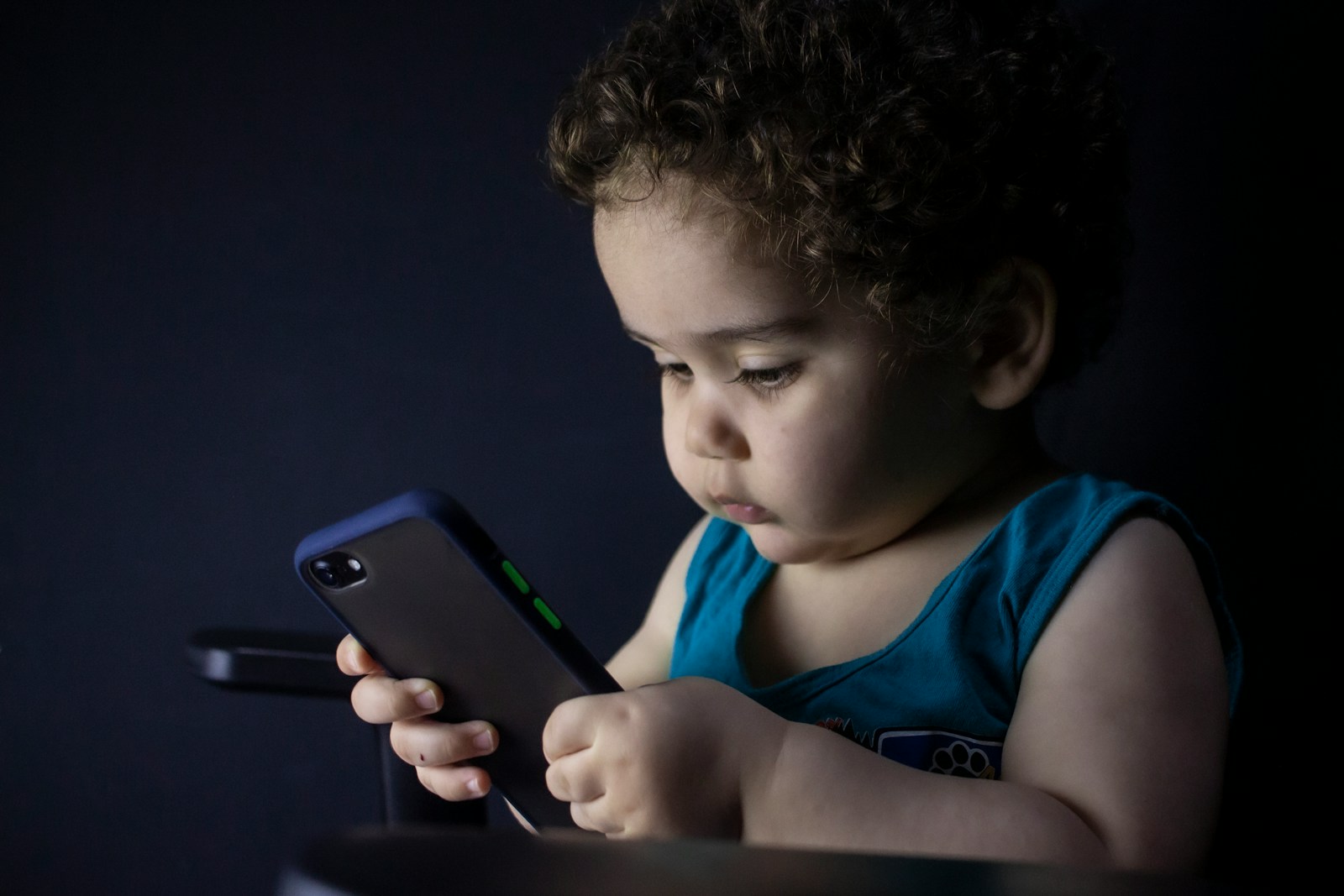Keeping our kids safe online is a big worry for most parents. With iPhones being so popular among children and teens, finding good parental controls is important. Apple’s Screen Time offers built-in controls that let parents manage content, limit app usage, and set restrictions on their child’s iPhone without needing extra apps.
There are also many other parental control options for iPhones beyond what Apple provides. These range from simple monitoring tools to complete digital management systems. Each option has different features that might work better for some families than others, depending on the child’s age and the parent’s concerns.
1. Screen Time by Apple
Apple’s built-in Screen Time parental control is a free and convenient option for iPhone users. It comes pre-installed on iOS devices, so there’s no need to download additional apps.
Parents can set daily time limits for app categories or specific apps. This feature helps prevent children from spending too much time on games or social media.
The bedtime mode blocks apps during set hours, helping kids maintain healthy sleep patterns. Parents can also reward good behavior by adding extra screen time as needed.
Content filtering is another key feature. Parents can restrict mature content in apps, websites, and iTunes purchases based on age ratings.
App restrictions allow parents to block specific applications completely. This prevents children from accessing apps that may be inappropriate for their age.
Screen Time includes detailed reports that show how much time children spend on different apps. These insights help parents identify potential problem areas and adjust limits accordingly.
The setup process is straightforward. Parents can manage settings directly on their child’s device or remotely through Family Sharing.
For younger children, parents can use the “Ask to Buy” feature to approve all downloads and purchases. This prevents unexpected charges and inappropriate content.
The “Downtime” feature creates phone-free periods for homework, dinner, or family time. Only calls and approved apps remain available during these times.
While Apple’s Screen Time works well for iOS households, it does have limitations. Some tech-savvy kids have found workarounds, and the web filtering isn’t as robust as some third-party options.
Despite these minor drawbacks, Screen Time offers a solid foundation for parental controls without requiring additional purchases or complicated setups.
2. mSpy
mSpy is a powerful parental control app for iPhone that helps parents keep track of their children’s online activities. This monitoring tool offers extensive features designed specifically for concerned parents who want to ensure their kids’ safety.
With mSpy, parents can monitor text messages, social media interactions, and track GPS locations of their children. The app sends alerts when children enter or leave designated safe zones, giving parents peace of mind about their whereabouts.
One standout feature of mSpy is its ability to monitor multiple devices. The Family Kit plan allows parents to keep tabs on up to three children at once, making it an excellent choice for families with multiple kids.
Setting up mSpy on an iPhone is straightforward. Parents can choose between two proven methods to install the app and begin monitoring their child’s online activities.
The app provides detailed insights into children’s online behaviors, including their social media usage across platforms like Skype. This comprehensive monitoring helps parents spot potential issues before they become serious problems.
Unlike some basic parental control options, mSpy offers more than just location tracking. It provides parents with tools to see who their children are texting and what apps they’re using.
For parents concerned about their children’s safety both online and offline, mSpy serves as a complete monitoring tool that works on both iPhones and Android devices. The real-time updates help parents stay informed about their children’s activities without constantly checking in.
3. Eyezy
Eyezy is a comprehensive parental control application designed specifically for iPhone and iPad users. Parents can monitor their children’s online activities and ensure their digital safety with this tool.
The app offers real-time location tracking features that help parents know where their children are at all times. This function works through GPS and provides updates on the child’s whereabouts.
Parents can set up geofencing alerts with Eyezy. These notifications tell parents when their child enters or leaves specific areas, adding an extra layer of safety monitoring.
Content filtering is another key feature of Eyezy. The app can block access to adult content and explicit websites that might be harmful to children. This helps create a safer browsing experience.
App management allows parents to restrict downloads of inappropriate apps, movies, and music. This gives parents more control over what their children can access on their devices.
The interface is designed to be user-friendly, making it accessible for parents who may not be tech-savvy. Setting up restrictions and monitoring activities is straightforward.
It’s worth noting that some users have reported issues with the app. According to a Reddit post, there have been complaints about delayed updates and functionality problems.
Eyezy offers different subscription plans to suit various family needs. Parents can choose the option that best fits their monitoring requirements and budget constraints.
The app works on both iPhone and iPad devices, making it versatile for families with multiple Apple products. This compatibility helps parents maintain consistent monitoring across different devices.
4. Bark
Bark stands out among iPhone parental control apps with its unique monitoring approach. Unlike many competitors, it scans your child’s texts, email, YouTube, and over 30 apps and social media platforms to identify potential issues.
The app specifically looks for concerning content like cyberbullying and inappropriate material. Parents receive alerts when Bark’s system flags potential problems, rather than showing all of a child’s communications.
This balanced approach gives kids some privacy while still keeping parents informed. Bark only alerts you to flagged content, not everything your child does online.
Setting up Bark on an iPhone involves installing the app and connecting it to your child’s accounts. The system then works in the background to monitor activity across connected platforms.
Parents can also use Bark to block certain websites, manage screen time, and track location. These features help create a safer digital experience for children using iPhones.
Some users appreciate Bark’s philosophy of limited intervention. According to Reddit discussions, the app performs deep inspection of communications but intentionally limits what parents see to respect children’s privacy.
The app requires a subscription, which covers multiple devices per child. This makes it suitable for families where kids use both phones and computers.
Bark works best when parents talk with their children about why they’re using the monitoring tool. This transparency helps maintain trust while keeping kids safer online.
5. Norton Family
Norton Family is a robust parental control software designed to help parents monitor and manage their children’s iPhone activities. It offers a user-friendly interface that makes it easy to set up and navigate.
The app provides tools that teach kids safe online habits while giving parents insights into their digital activities. Parents can use it to promote a healthy balance between online and offline time.
One standout feature is the ability to set screen time limits for your child’s device. This helps prevent excessive usage and encourages more balanced activities throughout the day.
Content filtering is another key function that lets parents block unwanted content based on age appropriateness. The filters work across browsers and apps to maintain a safer browsing environment.
Norton Family also offers detailed activity reports. These reports show what your child views and searches for online, giving you better awareness of their digital footprint.
To get full functionality on iPhones, parents need to configure certain settings on their child’s iOS device. While some features work automatically, others require specific setup steps.
The service is available through a web portal where parents can manage all connected devices. This central dashboard makes it convenient to adjust settings for multiple children from one location.
Norton Family works as a standalone product but also integrates with other Norton security solutions. This makes it a good option for families already using Norton antivirus or security products.
The iOS version has some limitations compared to the Android version due to Apple’s restrictions. However, it still provides core monitoring and management functions that most parents need.
6. Qustodio
Qustodio stands out as a comprehensive parental control solution for iPhone users. This app has earned recognition from PC Mag as an Editors’ Choice for best family parental control app, highlighting its effectiveness.
The platform offers extensive monitoring capabilities that work across multiple devices. Parents can easily track their children’s online activities wherever they go, providing peace of mind in today’s connected environment.
One of Qustodio’s strengths is its robust web content filtering. The app blocks inappropriate content effectively while still allowing access to age-appropriate websites and resources.
App blocking is another key feature that parents appreciate. Qustodio allows specific control over which applications children can access and for how long, helping manage screen time more effectively.
The detailed activity log gives parents insight into how their children use their devices. This transparency helps foster healthy conversations about digital habits rather than creating an atmosphere of secret surveillance.
Qustodio offers more than 20 advanced features through its platform. These tools give parents flexible options to customize protection based on each child’s age and needs.
The app works seamlessly on iPhones through the App Store, making installation straightforward. Its interface is intuitive enough for parents who aren’t particularly tech-savvy.
Parents considering Qustodio can try the service before committing. The company offers a free trial period that allows families to test the features and determine if they meet their specific requirements.
While Qustodio provides extensive control features, it maintains a balance between protection and privacy. This approach helps parents guide their children’s digital experiences without becoming overly restrictive.
7. Net Nanny
Net Nanny stands out as a trusted option for parents looking to monitor their children’s iPhone activities. This parental control software offers real-time tracking of online and app activity, giving parents visibility into their child’s digital world.
The app excels at internet filtering, which helps block unsafe materials before your child encounters them. Parents appreciate how Net Nanny can quickly allow, block, or filter various apps on iOS devices.
According to recent information, Net Nanny can detect and block over 120 apps, including at least five social media platforms. This feature proves especially helpful for parents concerned about inappropriate content on social networks.
The Net Nanny system works through two separate apps. The parental control app lets parents set rules and monitor activity. Meanwhile, the child app needs to be installed on the kid’s device to enforce these restrictions.
Parents can track screen time and set appropriate limits using Net Nanny’s interface. The software provides detailed reports about browsing habits and app usage, helping parents start meaningful conversations about online safety.
The award-winning technology behind Net Nanny focuses on filtering content in real-time rather than simply blocking entire websites. This approach allows for more nuanced control over what children can access.
Net Nanny offers a comprehensive solution for parents worried about their children’s online safety. With its filtering capabilities and monitoring tools, it helps families navigate the challenges of digital parenting on iPhones.
8. FamilyTime Premium
FamilyTime Premium offers a comprehensive set of parental control features for iPhone users. The app helps parents monitor their child’s digital activities and set appropriate boundaries for screen time.
Parents can track their child’s location, monitor app usage, and block inappropriate content with this service. The iOS version is designed specifically for iPhone users with features tailored to Apple’s ecosystem.
One standout feature is the ability to set screen time limits. This helps kids develop healthy digital habits without constant parental intervention.
FamilyTime Premium includes a 30-day reporting history to track patterns in your child’s device usage. This gives parents insight into how their children are spending time online.
The app offers uninstall protection to prevent tech-savvy kids from removing the monitoring software. This ensures continuous protection even with resistance from children.
Parents appreciate the user-friendly interface that makes navigation simple. Even those with limited technical knowledge can set up and manage the controls effectively.
The subscription plan options allow families to choose coverage that fits their needs. Different tiers accommodate various family sizes and feature requirements.
FamilyTime Premium provides free access to new features as they’re released. Subscribers don’t need to pay extra for updates and improvements to the service.
The App Store version allows parents to block specific apps, texts, and websites that may be inappropriate. This granular control helps create a safer digital environment.
Many parents report that FamilyTime has helped them guide their children’s digital habits more effectively. The balance of monitoring and restriction tools makes it a popular choice for families with iPhones.
9. Boomerang
Boomerang Parental Control offers a powerful solution for parents who want to manage their children’s screen time on iPhones. The app works alongside Android devices to provide comprehensive digital wellness features for families.
Parents can set daily time limits on app usage, which helps children develop healthier device habits. The interface is straightforward, making it easy for even tech-hesitant parents to navigate and implement controls quickly.
One standout feature of Boomerang is the ability to block specific apps that parents deem inappropriate. This targeted approach gives more flexibility than all-or-nothing solutions.
The app also allows certain educational and health apps to function outside of regular time restrictions. This smart exception encourages productive device use while still maintaining overall limits.
Boomerang extends its protection to web browsing too. Parents can block particular websites they consider harmful or inappropriate for their children’s age group.
The parent control interface works through a separate Parent Mode app available for both iOS and Android. This setup lets parents adjust settings remotely without needing physical access to their child’s device.
Price-conscious families will appreciate that Boomerang is considered an affordable option compared to many competitors in the parental control market. It delivers solid functionality without breaking the family budget.
Boomerang has earned recognition within the industry, appearing on PCMag’s list of top tested picks for parental control software. This recognition speaks to its reliability and effectiveness.
For iPhone users specifically, Boomerang offers a seamless experience that integrates well with iOS while still providing robust monitoring and management capabilities.
10. Mobicip
Mobicip stands out as a comprehensive parental control solution for iPhones. This app helps parents manage their children’s screen time effectively through several key features.
The app allows parents to set daily screen time limits for their kids. They can block specific apps and websites that might contain inappropriate content for children.
Mobicip focuses on protecting children from cyberbullying and online abuse by filtering content and monitoring social media conversations. This feature gives parents peace of mind about their child’s online interactions.
Parents can easily manage all these controls through the Mobicip dashboard. The interface is straightforward and doesn’t require technical expertise to navigate.
The App Store version of Mobicip lets parents seamlessly block specific websites and apps that may be harmful or distracting. This targeted approach helps children stay focused on productive activities.
For busy parents, Mobicip offers a smart solution that covers multiple aspects of digital safety. Besides screen time management, it provides location tracking and internet filtering capabilities.
The app works across various devices, making it suitable for families with multiple iPhones and other devices. Parents can apply consistent rules across all their child’s devices.
Mobicip requires a subscription plan after the initial trial period. The cost varies based on the number of devices and features needed.
Setup takes just a few minutes, with clear instructions guiding parents through the installation process. Regular updates ensure the app stays effective against new online threats and platforms.
Why Parental Controls Are Essential for iPhones
iPhone parental controls provide critical safeguards for children in the digital space. These tools help parents create boundaries while teaching responsible tech habits.
Protecting Children’s Privacy
Children often don’t understand the privacy risks that come with smartphone use. iPhone parental controls include features that help protect children’s personal information when they’re online.
Parents can restrict location sharing, prevent app downloads that might collect unnecessary data, and limit who can contact their child. These settings also let parents review and approve friend requests on certain platforms.
Privacy protection extends to in-app purchases too. Parents can require approval for all purchases, preventing children from accidentally spending money or sharing payment information.
Many parents don’t realize that some apps collect extensive data from young users. Setting up proper privacy restrictions helps create a safer digital environment where children can learn without exposing their personal details to potential risks.
Managing Screen Time
Excessive screen time can affect sleep, academic performance, and social development. Apple’s Screen Time feature lets parents set daily limits for device use and specific apps.
Parents can create “Downtime” periods when only approved apps work. This helps establish tech-free times for homework, family meals, or bedtime. The feature also provides weekly reports showing how much time children spend on different activities.
Studies show that parental controls serve as “training wheels” to help kids develop healthy tech habits. By gradually adjusting limits as children demonstrate responsibility, parents can teach balanced digital use.
Setting app-specific time limits is particularly helpful. This allows educational apps more time while restricting entertainment apps to shorter periods.
Filtering Content
The internet contains content inappropriate for young users. iPhone parental controls include content filtering that restricts access based on ratings and categories.
Parents can:
- Block explicit music, podcasts, and books
- Restrict movies and TV shows by age ratings
- Filter websites with adult content
- Control which apps children can access
Content restrictions work across Safari, App Store, and entertainment apps. This creates a safer browsing environment appropriate for a child’s age and maturity level.
Web filtering can be customized to allow only specific websites or block problematic ones. Parents should regularly review these settings as children grow and their needs change.
Despite these tools, many parents find that basic iOS controls have limitations. For more comprehensive protection, specialized parental control apps offer additional features and monitoring capabilities.
Key Features to Look for in Parental Control Apps
When selecting parental control apps for iPhones, certain features stand out as essential for effective monitoring and management of your child’s device usage. The right combination of usability, compatibility, and notification systems can make all the difference in protecting your kids online.
Ease of Use
A parental control app should be simple to set up and manage. Many parents avoid using these tools because they seem too complicated. The best apps offer clean, intuitive interfaces that don’t require technical expertise.
Look for apps with straightforward installation processes and clear dashboard layouts. Apple’s Screen Time provides built-in controls that many parents find sufficient because of its simple interface and integration with iOS.
The setup process should take minutes, not hours. Good apps include guided setup wizards and visual cues that help parents understand what each setting does.
Key ease-of-use features to consider:
- Quick installation process
- Simple dashboard layout
- Clear explanations of features
- Minimal steps to adjust settings
Cross-Device Compatibility
Children rarely use just one device, making cross-platform compatibility crucial. The best parental control solutions work across different operating systems and devices.
While some apps focus exclusively on iOS, families with multiple device types need controls that work on all of them. This prevents kids from simply switching to an unmonitored device when restrictions are in place.
Look for apps that offer unified management consoles. These let parents adjust settings for all family devices from one place. The ability to sync restrictions across devices ensures consistent protection.
Many apps also offer web-based dashboards, allowing parents to monitor and adjust settings from any browser when away from their primary device.
Real-Time Alerts
Immediate notification systems help parents address potentially harmful situations quickly. Real-time alerts are essential for monitoring without constant manual checking.
Effective parental control apps send alerts for various triggers:
- Attempts to access blocked content
- Installation of new apps
- Location updates (when a child arrives at or leaves designated areas)
- Unusual activity patterns
- Specific keywords in messages or searches
Advanced monitoring apps let parents customize alert thresholds to prevent notification fatigue. This focuses attention on genuinely concerning activity rather than overwhelming parents with minor alerts.
The best solutions strike a balance between providing timely information and respecting privacy. They notify parents of potentially harmful situations without revealing every detail of normal, safe activities.
Frequently Asked Questions
Parents often wonder about the most effective ways to monitor and control their children’s iPhone usage. The best solutions combine app-based monitoring tools with Apple’s built-in features to create a safe digital environment.
What are the features of top-rated parental control apps for iPhones?
The best iPhone parental control apps offer a mix of monitoring and restriction capabilities. Top apps like mSpy and Eyezy provide content filtering to block inappropriate websites and apps.
Location tracking is another key feature, letting parents see where their children are in real-time. Most premium apps also include screen time limits and app usage reports.
Social media monitoring is available in apps like Bark, which scans messages for signs of cyberbullying, depression, or other concerns. Norton Family offers web filtering and time supervision across multiple devices.
How can I monitor my child’s text messages on their iPhone?
Monitoring text messages on an iPhone requires specific approaches due to Apple’s privacy protections. Third-party apps like mSpy and Eyezy can monitor SMS messages and some messaging apps with proper setup.
For iMessage monitoring, family sharing and Apple’s Screen Time restrictions provide some oversight options. Some apps require jailbreaking, which is not recommended as it voids warranties and creates security risks.
The most effective approach combines technical monitoring with open conversations about digital communication safety. Setting clear expectations about message content helps create healthier digital habits.
Are there effective free parental control apps available for both iPhone and Android?
Free options exist but typically offer limited features compared to paid solutions. Google Family Link is an excellent free option for Android devices, providing screen time limits and app approval.
For iPhones, Apple’s built-in Screen Time feature offers basic controls without additional cost. It includes app limits, content restrictions, and downtime scheduling.
Cross-platform free options often have significant limitations in monitoring capabilities. Most robust solutions require subscription fees for full functionality across both operating systems.
How can parents manage and control their teenager’s iPhone usage?
Managing teen iPhone usage works best with a balanced approach. Set clear, consistent boundaries about when and how long they can use their devices.
Use Apple’s Screen Time to create downtime periods during homework, family meals, and bedtime. The feature also allows parents to set app-specific time limits.
For older teens, consider a monitoring approach that respects growing independence while maintaining safety. Apps like Bark can alert parents to serious concerns without full surveillance of all communications.
What built-in parental controls does the iPhone offer?
iPhones come with comprehensive parental controls through Screen Time, accessible in Settings. These controls include content restrictions for apps, websites, and media.
Screen Time allows parents to set daily time limits for specific apps or categories. The downtime feature lets you schedule periods when only phone calls and approved apps are available.
Parents can also restrict in-app purchases, explicit content, and privacy settings. Content & Privacy Restrictions prevent children from accessing inappropriate content or changing important device settings.
How do parental control apps compare with Bark in monitoring a child’s digital activities?
Bark takes a unique approach focused on content monitoring rather than strict control. It scans texts, emails, and social media for concerning content like cyberbullying or self-harm references.
Unlike comprehensive monitoring apps such as mSpy or Eyezy, Bark doesn’t provide full access to all communications. Instead, it alerts parents only when potential issues are detected.
Norton Family offers broader device management with web filtering and time supervision but lacks Bark’s advanced content analysis. The best choice depends on whether parents prioritize prevention through restrictions or detection of emerging problems.







